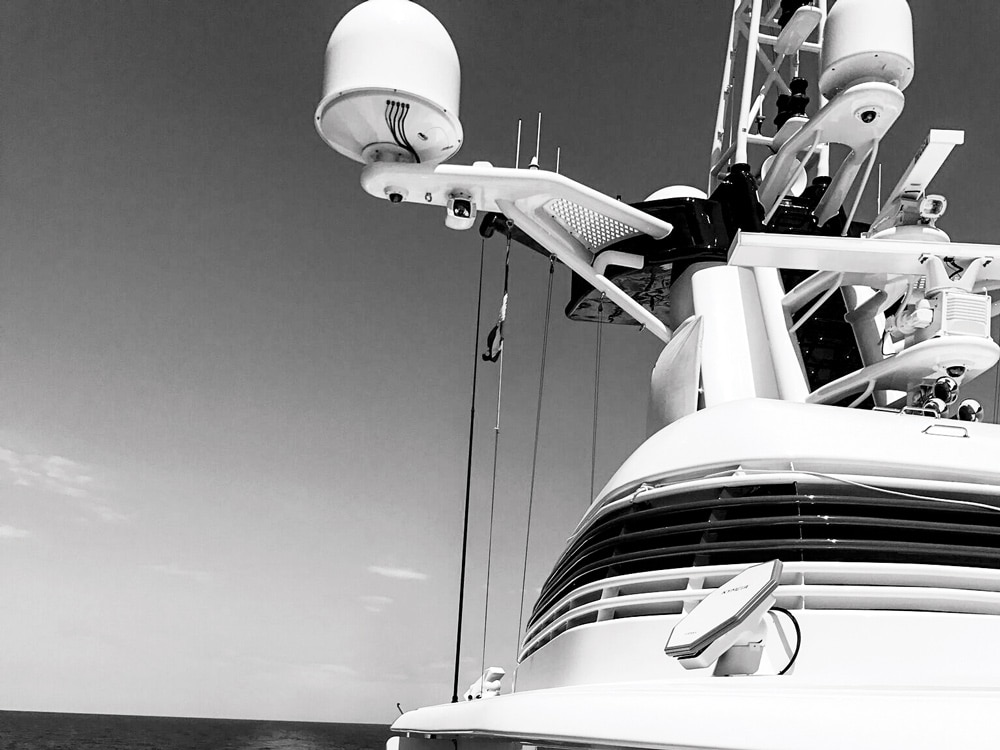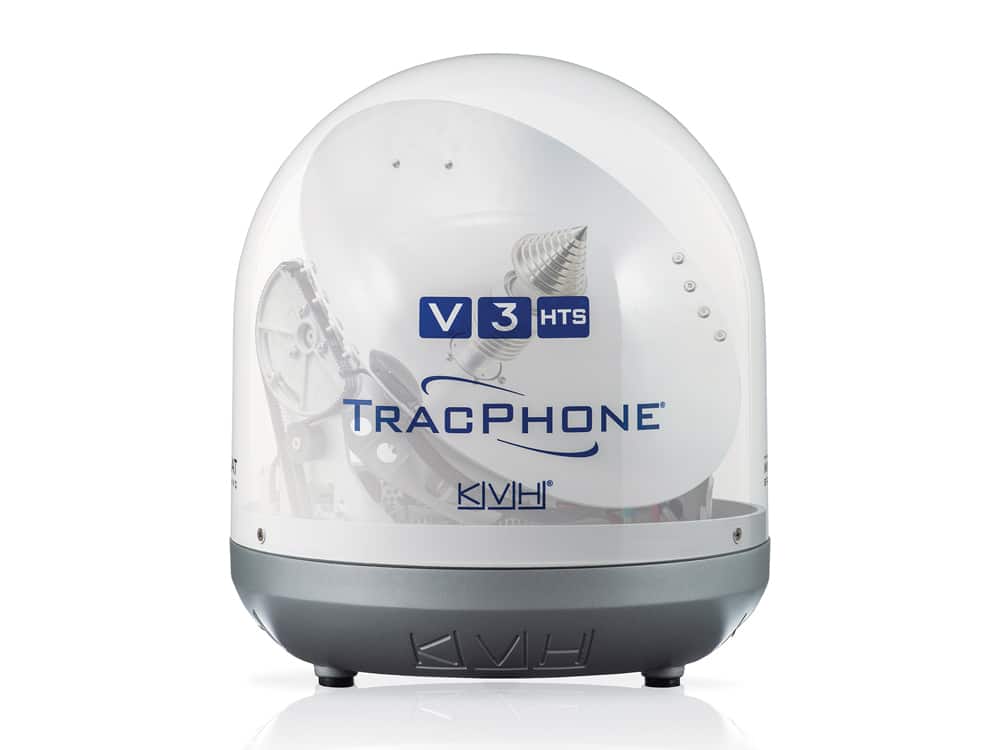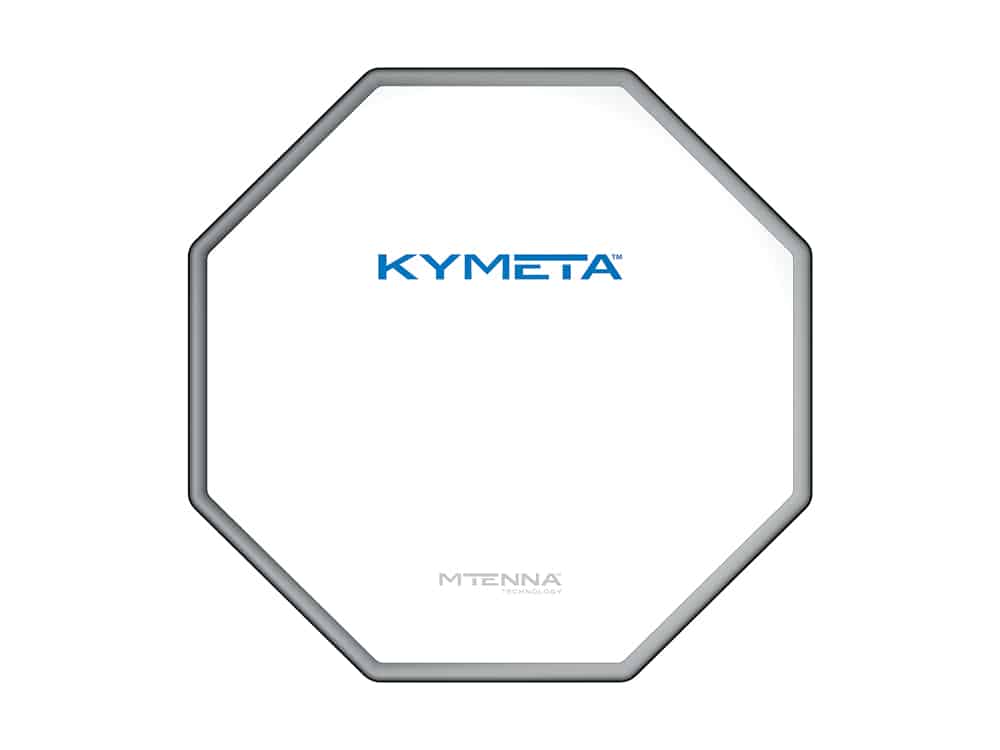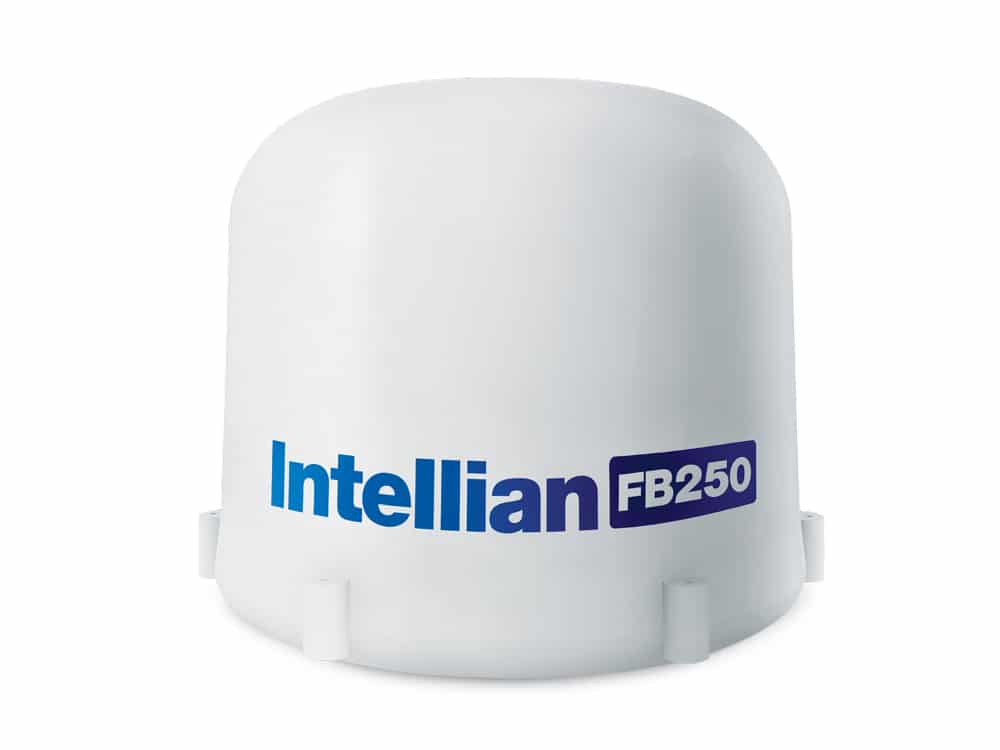
The holidays are classically stressful times, but for Michael Oliver, the engineer aboard the Westport 130 The B&B, last year included a three-week owner visit plus three charters. The never-ending flow of guests on board created a constant demand for fast, wireless connectivity.
“Oftentimes, owners and clients don’t understand the nuances of why their video isn’t loading to their device; they simply want it to work, and want it to work now,” Oliver says.
Luckily for him, the yacht’s new KVH V7-HTS satellite-communications terminal delivered almost 20 times faster speeds than the previous antenna.
“All the users on board were able to use their devices just as they would at home,” he says.
Looking for the same outcome aboard your yacht? Here’s some of the biggest news in satellite-communications systems today.
KVH
Bandwidth and speed are two major considerations when selecting a satellite-communications system. KVH has long offered one-stop shopping, supplying the antenna hardware and the airtime. While this approach creates a walled-garden arrangement for customers (think Apple), it also allows KVH to optimize its hardware for its network. For example, in October 2017, KVH introduced TracPhone V7-HTS, which provides high-throughput satellite (HTS) capabilities using Intelsat Epic and Sky Perfect JSAT satellites; collectively, these satellites support KVH’s mini VSAT Broadband HTS network.
KVH recently introduced its 14.5-inch TracPhone V3-HTS, delivering downlink speeds as fast as 5 megabits per second and uplink speeds as fast as 2 Mbps. By comparison, KVH’s still-contemporary TracPhone V3-IP delivers download speeds of 2 Mbps and upload speeds of 128 kilobits per second.

“HTS is a departure from traditional Ku- and Ka-band service,” says Rick Driscoll, KVH’s vice president of satellite products and services. “The traditional beams covered large geographic areas. With HTS, the geographic area is much smaller, allowing HTS satellites to deliver higher power to smaller areas. This creates a collection of beams that can focus on geographic areas — say, Miami or New York City — and you can reuse the same frequencies to cover Miami as you use to cover New York City. With traditional beams, you can’t reuse frequencies.”
KVH’s HTS terminals use different modems too, but the real magic is in the satellite network. And while KVH’s mini VSAT Broadband HTS network isn’t global, it covers most popular boating areas.
Read More: KVH’s TracPhone LTE-1 is Super Fast
“We don’t cover the poles or the deep southeast Pacific,” Driscoll says. “The V3-HTS is primarily for people who wander in and out of cellular coverage, for example, boats going to the islands. People typically select a V7-HTS for global travel.”
All told, KVH added 25 million square miles to its global Ku-band (11 to 14 gigahertz) coverage with the advent of its HTS network. And while satcom hardware is never cheap (the TracPhone V3-HTS costs $17,995, while a V7-HTS fetches $29,995), HTS service offers additional good news for owners: “Data costs to the customer are lower,” Driscoll says.
This is especially happy news for data-hungry owners, or their grandkids.
Kymeta
Kymeta snapped heads in late 2017 with its mTennau7 Antenna Subsystem Modules, which use metamaterials to transmit and receive satellite-communications signals. These antennas eliminate moving mechanical parts, reduce weight and windage aloft, while supporting data rates exceeding 100 Mbps.
That said, Kymeta’s initial offerings were curtailed by the cost of high-speed connectivity, and by Kymeta’s use of iDirect X7 satellite modems, offering a maximum download speed of 65 Mbps. To make the service cost-effective, Kymeta’s KĀLO network delivers 4 Mbps downlink and 1 Mbps uplink speeds, but e3 Systems and Speedcast sell Kymeta hardware that operates on different networks to deliver faster speeds, albeit at higher costs.

Now Kymeta has released its mTenna Plus and mTenna Select. This system, sold as one product (call for pricing), is designed to bolster the performance of installations consisting of two to four mTennau7 antennas. The mTenna Plus combines the receiving connection of the mTennau7 antennas, giving the system 360-degree reception. For example, on a yacht fitted with four mTennau7 antennas, Kymeta says the mTenna Plus delivers “up to 5.4 decibels of effective reception gain and signal-to-noise improvement.”
On the transmitting side, mTenna Select determines which panel has the best pathway to a satellite. Transmitted data is routed through the optimal antenna, and the mTenna Select constantly re-evaluates its antenna options to deliver the fastest-possible speeds.
The mTenna Plus and mTenna Select deliver quick speeds while the yacht is underway, but also help owners avoid blockages due to buildings, the yacht’s superstructure or other vessels in marinas.
“The mTenna Plus and mTenna Select are important for superyachts,” says Bill Marks, Kymeta’s chief strategy officer.
Moving forward, he says, speed will increase and prices will drop as the number of satellites — now roughly 5,000 — increases to 25,000 by 2025. Additionally, Kymeta envisions creating data plans beyond its KĀLO service. Also, Marks says, mTenna panels are now compatible with faster modems.
“We’re focused on building the right technology and building our distribution network at the same time,” he says. “We also continue to invest in developing products, including different form factors. I don’t see the mTennau7 going away — we’ll continue to stand behind it for much more than five years — but we make continued improvements in firmware, hardware and software in a way that’s secure and that offers world-class support features.”
Intellian
Very small aperture terminals (VSAT) are a common way for yachtsmen to transmit and receive data. While numerous service providers and terminal manufacturers are in this space, Intellian has long been one of the more innovative antenna manufacturers.

VSAT terminals typically operate on C- (4 to 8 gigahertz), Ku- and Ka- (26.5 to 40 GHz) frequency bands; C-band serves as more of a legacy frequency, while Ku-band frequencies are the hard-pulling workhorses, and the newer Ka-band frequencies have more bandwidth and frequency slots available. Because of this availability, says Paul Comyns, Intellian’s vice president of global marketing, more geosynchronous and medium-Earth orbit satellites that operate on Ka-band frequencies will soon be entering service.
Intellian’s two newest VSAT antennas, the v65 ($34,000) and v85NX ($41,000), offer open-platform connectivity on Ku-band frequencies. Both antennas also can be converted to operate on newer Ka-band signals.
“Traditional VSAT systems can be improved by bolstering the antenna’s radio-frequency performance,” Comyns says.
As with all connectivity, speed is key, but not all yachtsmen want to pay for the fastest speeds. Inmarsat’s commercial-grade Global Xpress service is one of the fastest VSAT services currently afloat, but it requires a GX antenna (such as Intellian’s GX100HP at $68,000) and a FleetBroadband terminal (such as Intellian’s FB250 at $11,000).
For those willing to invest, “it’s a great solution because you always have a FleetBroadband backup,” Comyns says. “We’re increasingly seeing antennas on smaller craft.”
With any satcom system, signals can get blocked as a yacht turns at sea, or by surrounding buildings or other vessels in congested marinas. As a result, yachts are sometimes equipped with multiple antennas and an intermediary control — such as Intellian’s GX Mediator ($9,000) — which allow the system to steer communications through the antenna with the best connection.
“It automatically switches as one antenna comes into blockage,” Comyns says. “We’re seeing more and more of [these aboard] yachts.”









